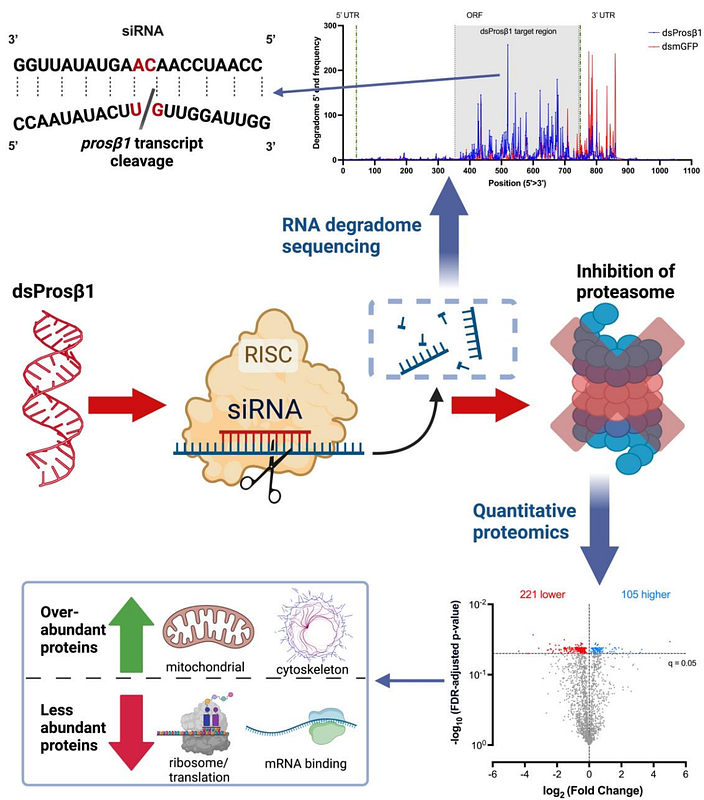RNA degradomics and proteomics reveal the mechanism of dsProsβ1-mediated proteasome targeting in the cabbage stem flea beetle

RNA degradomics and proteomics reveal the mechanism of dsProsβ1-mediated proteasome targeting in the cabbage stem flea beetle
Cedden, D.; Guney, G.; Rostas, M.; Scholten, S.
AbstractBackground The cabbage stem flea beetle (CSFB, Psylliodes chrysocephala) is a major threat to oilseed rape crops. Management of CSFB has become increasingly challenging due to the European Union\'s ban on neonicotinoids and the emergence of pyrethroid-resistant populations. Recently, RNA interference (RNAi) has shown potential as an environmentally friendly alternative for the management of CSFB, and proteasome subunits have been identified as very effective RNAi targets. However, the mechanism of action of proteasome-targeting RNAi strategies remains to be fully characterized at the molecular level in CSFB and other pests. Here, we used CSFB to investigate the mechanism of action of dsPros{beta}1, which is a double-stranded RNA targeting a proteasome subunit. Results RNA degradome sequencing identified siRNA-mediated cleavage events in the target transcript, with cleavage events occurring at higher rates between uracil-guanine and adenine-adenine pairs. RISC-bound small RNA sequencing confirmed the presence of mature siRNAs guiding these cleavage events while revealing discrepancies between siRNA abundance and cleavage patterns. Proteomics analysis identified changes in protein levels caused by proteasome inhibition, including an increase in mitochondria- and cytoskeleton-related proteins and a decrease in central dogma-associated proteins. Conclusion This study demonstrates that combining RNA degradomics, RISC-bound sRNA-seq, and proteomics is an insightful approach to investigating the mechanism of RNAi-based pest control at the molecular level. The insights gained from these methods can be used to enhance proteasome-targeting RNAi strategies against insect pests.